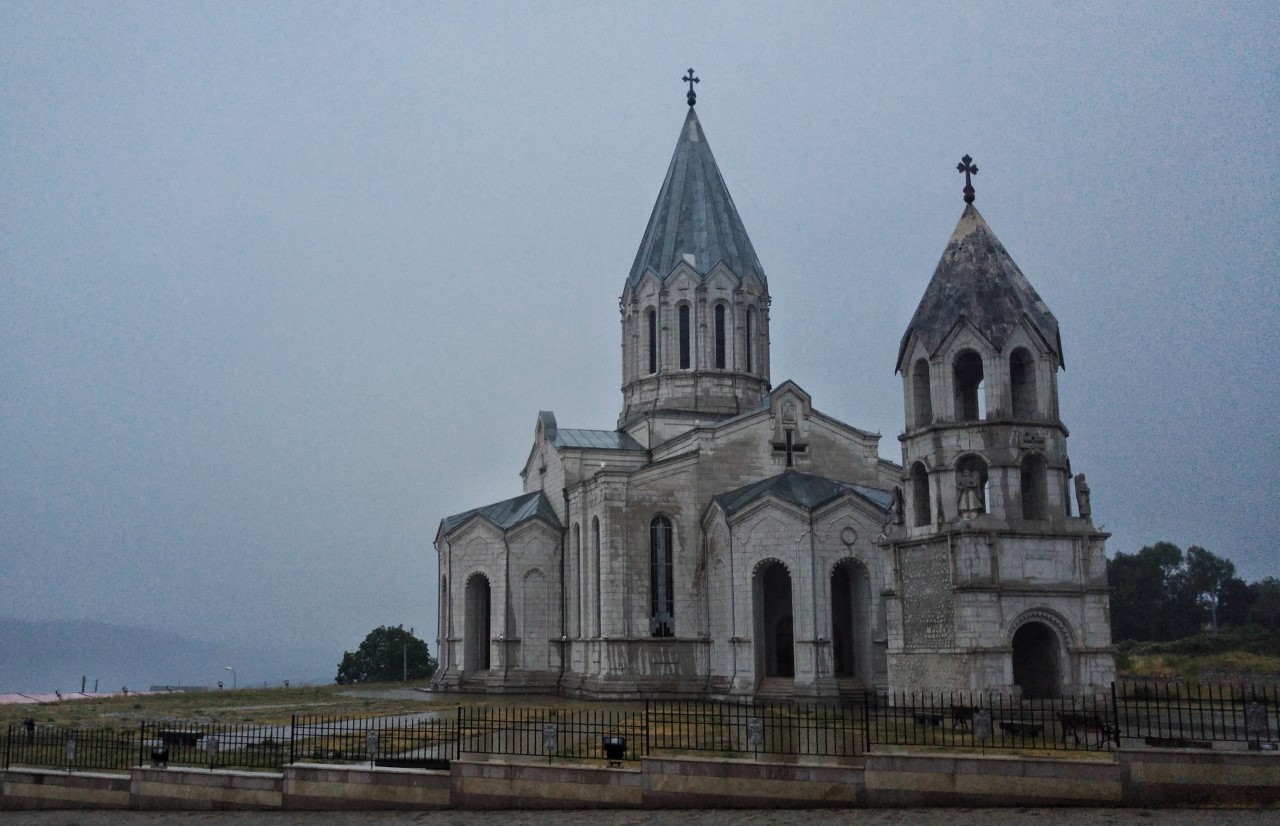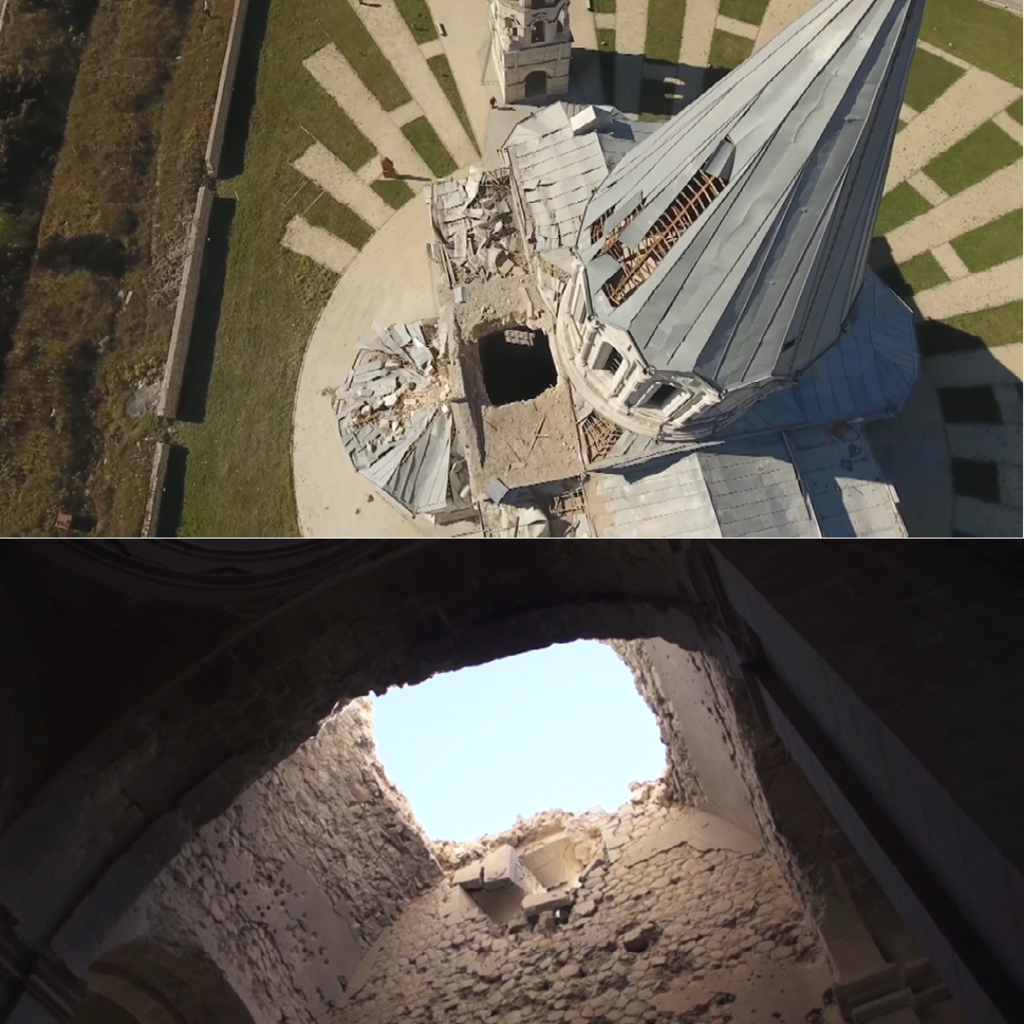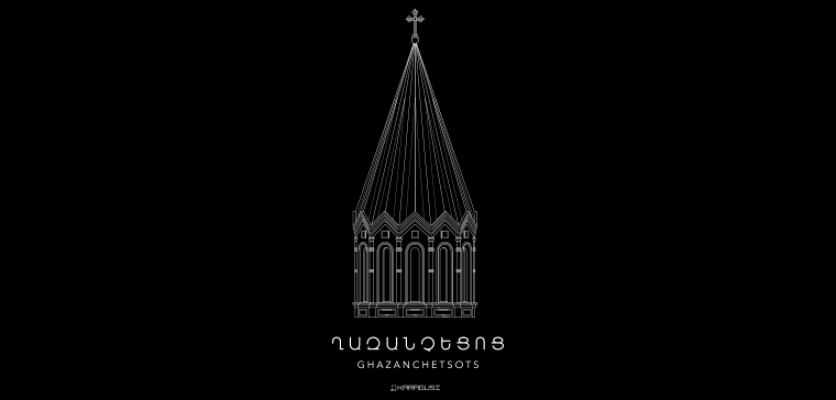Ghazanchetsots in peril: Shushi’s ‘white bride’ revisited
May 08, 2021
On May 8, 1992, the liberation of Shushi was celebrated with “Hayr mer” («Հայր մեր» | “The Lord’s Prayer”) at the church altar of Ghazanchetsots.
Bombed during the 2020 Artsakh War, vandalized, and recently dismantled under the pretext of “renovation,” Ghazanchetsots has now become a bleeding wound too painful to look at.
Check out the facts you might not know about the monument's glorious and tumultuous history below.
 (Photo courtesy of Kourken Papazian)
(Photo courtesy of Kourken Papazian)Perched on a high plateau over the Karkar gorge, the Holy Savior Cathedral of Shushi was a beacon of light and liberty with its conical metallic dome.
Built of smooth milky limestone and standing thirty-five meters high at the center of the city, it exuded a sense of timeless elegance.
Under Azerbaijani occupation since the end of Nov. 2020, it is threatened by cultural destruction, sharing a similar fate of Armenian churches and cross-stones long gone.
The torn-down dome

Between the sixteenth and nineteenth centuries, churches in Artsakh were usually built in the basilica style, due to economic reasons. Harking back to traditional Armenian architecture, Ghazanchetsots was one of the only nine churches in Artsakh that was built with a dome during this period. The seventeen meter-dome was based on four external pillars, similar to that of Etchmiadzin Cathedral. It was torn down in early May of 2021.
(Photo: Gegham Stepanyan)
Cauldron money

Armenian migrants from the village of Ghazanchi (Shahkert, present-day Qazançı) in Nakhichevan, made cauldrons (ghazan in Turkish) to finance the church’s construction between 1868 and 1887. The architect’s name, Simeon Ter Hakopiants, is preserved in the floor inscriptions of the church. The Armenian inscription on the three-story belfry says that it was built in memory of all the people of Ghazanchi.
(Photo: Wikimedia Commons)
Doomed angels

Sculptures of four angels stood on the first floor of the belfry blowing trumpets, heralding the last judgement and the resurrection of the dead. They were destroyed after the Shushi massacres of 1920, and during the first Artsakh War. Following their restoration, one of the angels was depicted on Shushi's coat of arms. All four sculptures were smashed to pieces after the fall of the city in Nov. 2020.
(Photo: Wikimedia Commons)
In tune with its environment

One of the largest churches in the Armenian world, Ghazanchetsots is perfectly in tune and harmoniously blended in with its environment. Precious manuscripts, dating back to the early seventeenth century, were kept at the monumental cathedral, as well as The Right Arm of Grigoris, the grandson of Gregory the Illuminator, founder and patron saint of the Armenian Apostolic church.
(Photo: Wikimedia Commons)
An incredible echo experience

An underground semicircular room with special acoustic properties was designed in such a way that if you stood in the center, you could hear your own voice louder than usual, but it would sound normal to the person next to you. If two people stood at diametrically opposite points, they could clearly hear each other whispering. According to local lore, before liturgy, a priest could receive absolution in this crypt by hearing his own voice saying, “Let my ears hear what my lips utter.”
(Photo: Wikimedia Commons)
The genius of Armenian architecture

In a clear attempt to imitate the grand style of Armenia's mother church, Etchmiadzin, the cathedral’s floor plan is a spatial layout of cross-domed basilica with four apsides. The 34.7 meters long and 23 meters wide church represents a fusion of innovative and traditional architectural techniques. It has three identical entrances and is rich in ornamental reliefs on the portals and windows, as well as Armenian inscriptions honoring private donors.
(Photo: Wikimedia Commons)
The Lord’s Prayer

Over the years, the architectural complex of the Holy Savior Cathedral was used as a granary, barn, and garage. Stones were removed from the walls to build houses. The bronze bell was sold, and the church was set on fire. During the first Artsakh War it was converted into an armory of Grad missiles. On May 8, 1992, the liberation of Shushi was celebrated with “Hayr mer” («Հայր մեր» | “The Lord’s Prayer”) at the church altar.
(Photo: Wikimedia Commons)
A symbol of history and identity

Second only to Gandzasar Monastery as a spiritual center in Artsakh, Ghazanchetsots was restored to its full glory in 1997, to become the seat of the Diocese of Artsakh of the Armenian Apostolic Church. Since then it has emerged as a symbol of history and identity for the people of Artsakh. A mass wedding of 500 couples was held at the church in 2008.
(Photo: Armenpress)
Krunk under the collapsed roof

The cathedral was bombed twice and heavily damaged in early October of 2020. Three foreign journalists were injured there while covering the war. Four days after the attacks, on October 12, 2020, Sevak Avanesyan, first cellist of the Belgian National Philharmonic Orchestra, played "Krunk" («Կռունկ» | "The Crane") by Komitas under the collapsed roof of the church. Videos of his solemn performance went viral and attracted international attention.*
(Photo: Wikimedia Commons)
* On January 26, 2021, the human rights ombudsman of the Republic of Artsakh issued a public report titled: “The Armenian cultural heritage in Artsakh (Nagorno-Karabakh): Cases of vandalism and at risk of destruction by Azerbaijan.”
Video
Join our community and receive regular updates!
Join now!







Attention!